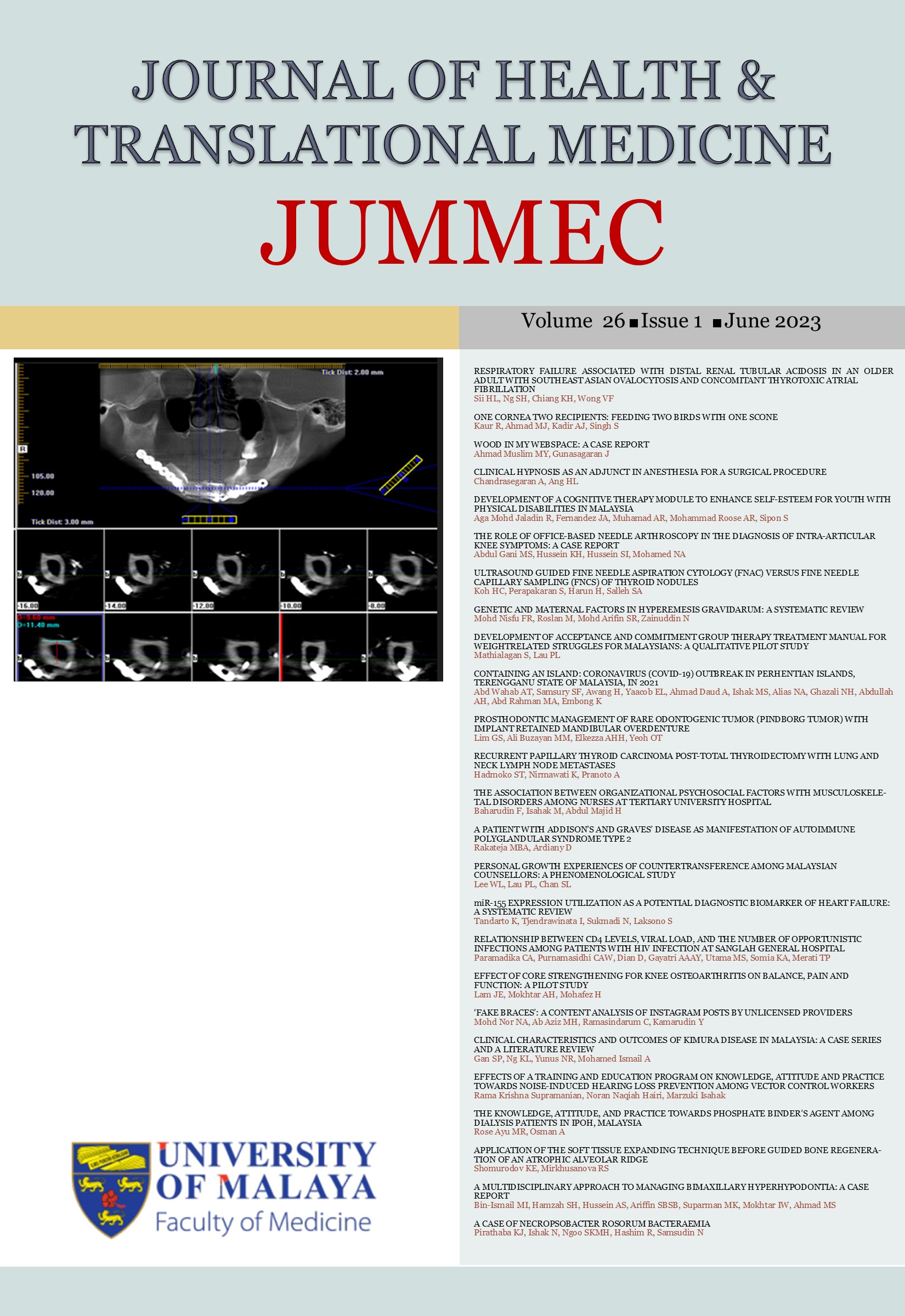ULTRASOUND GUIDED FINE NEEDLE ASPIRATION CYTOLOGY (FNAC) VERSUS FINE NEEDLE CAPILLARY SAMPLING (FNCS) OF THYROID NODULES
Received 2022-05-26; Accepted 2022-08-16; Published 2023-02-13
DOI:
https://doi.org/10.22452/jummec.vol26no1.7Abstract
Introduction
Sampling of non-palpable thyroid nodule under ultrasound guidance has been widely used, however less studies done in comparing the efficacy of technique between fine needle aspiration cytology (FNAC) and fine needle capillary sampling (FNCS) under ultrasound guidance.
Objectives
This study aimed to determine the cytologic adequacy rates and sample quality obtained by both techniques under ultrasound guidance.
Methods
Ultrasound‐guided thyroid nodule samplings were performed on 88 patients, 44 of them had FNAC and another 44 FNCS technique. The slides obtained were scored using a predetermined scoring system comparing five parameters: background blood; amount of cellular material; appropriate architecture retention, degree of cellular degeneration and cellular trauma. The results were analysed using chi square and binary logistic regression test.
Results
Patient who underwent FNCS technique was 0.61times (95%CI) less likely to have large amount of background blood sample; 0.39times less likely to have sample with excellent architecture retention; 2.31times and 1.13times more likely to have sample with minimal cellular degeneration and minimal cellular trauma respectively when compare to FNAC. These were however not statistically significant. FNCS was 0.23times less likely to obtain sample with abundant cellular material compared to FNAC and it was statistically significant. Diagnostic adequacy rate was similar in both techniques and it was statistically significant.
Conclusions
Ultrasound‐guided FNAC and FNCS yielded comparable diagnostic adequacy rates. Our study did not prove a clear superiority of FNCS over FNAC or vice versa. Both techniques could be use in tandem to achieve better diagnostic accuracy.
Keywords:
Fine needle aspiration cytology (FNAC), Fine needle capillary sampling (FNCS), Ultrasound guided
Downloads
Downloads
Published
Issue
Section
License
All authors agree that the article, if editorially accepted for publication, shall be licensed under the Creative Commons Attribution License 4.0 to allow others to freely access, copy and use research provided the author is correctly attributed, unless otherwise stated. All articles are available online without charge or other barriers to access. However, anyone wishing to reproduce large quantities of an article (250+) should inform the publisher. Any opinion expressed in the articles are those of the authors and do not reflect that of the University of Malaya, 50603 Kuala Lumpur, Malaysia.


